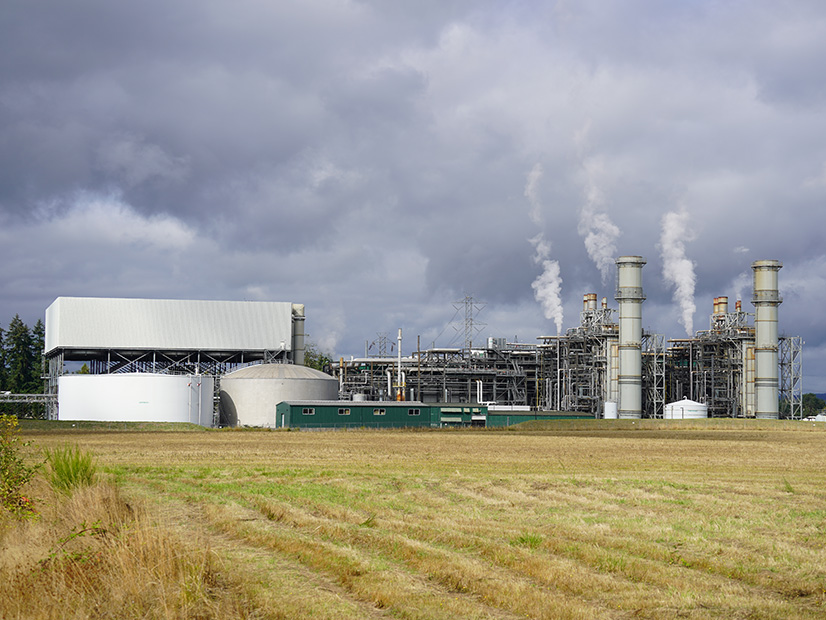
With 71 carbon capture and storage (CCS) projects added to the Global CCS Institute database in the first nine months of this year, the technology is experiencing an unprecedented surge. But at a total of only 135 facilities in the global pipeline, the CCS sector has a lot of room for growth, according to Jarad Daniels, CEO of the institute.
“If we are to meet our climate targets and achieve climate neutrality, we will need to scale global CCS capacity by a factor of 100 by 2050, requiring around $1 trillion of investment over the next 30 years,” Daniels said Tuesday during the launch webinar for the institute’s Global Status of CCS 2021 report.
The U.S. leads the market in installed facilities, and it will host 36 of the 71 tracked by the institute so far in 2021, according to the report. Regionally, North America leads the world with 16 installed facilities and 60 in development, followed next by Europe, which has three installed facilities and 35 in development.
Key drivers of the global growth are the adoption of ambitious climate targets and the net-zero commitments of more than 100 countries, according to Guloren Turan, general manager of advocacy and communications at the Global CCS Institute.
Those commitments have “kickstarted a cycle, whereby governments around the world are strengthening policy support for CCS, and the private sector, seeing the strengthening business case for CCS … is responding by advancing new projects, developing new business models and entering into strategic partnerships across the value chain,” Turan said during the webinar.
DOE Investment
The U.S. Department of Energy is targeting investments to grow CCS technologies that are “ready to be demonstrated,” Jennifer Wilcox, principal deputy assistant secretary at the department’s Office of Fossil Energy and Carbon Management, said during the event.
Over the last five years, she said, DOE invested $1.2 billion to develop CCS technologies, and the department’s budget request for next year asks for a 60% increase in federal investment in research and development for “carbon capture, reliable storage, and conversion of CO2 and its removal from … the atmosphere.”
The request would provide up to $368 million for fiscal year 2022, she said.
This year, DOE put $75 million into R&D on front-end engineering design studies for carbon capture in the natural gas power sector, according to Wilcox. The department last week announced that of that investment, $45 million went to 12 projects, including a GE Research project in New York to capture CO2 from natural gas combined cycle flue gas and reduce the levelized cost of electricity by 15%.
DOE also has invested $33 million this year to advance direct air capture (DAC) technologies, Wilcox said. Six R&D projects announced in June received $12 million to find ways to increase the amount of CO2 capture in the DAC process.
Capture and Removal
While avoiding CO2 emissions will always be cheaper than removing emissions from the air, Wilcox said, the world has moved beyond the time when that is enough to meet climate goals. Consequently, technologies to capture CO2 at the point of emission and CO2 removal projects are necessary to meet those goals, and DOE is focused on both.
Incentives for carbon capture are already in place in the U.S., but Wilcox says they’re not nearly enough.
The federal 45Q tax credit is currently priced at about $50/ton of CO2, “coupled to dedicated and reliable storage deep underground,” she said. “That’s not a high enough price tag for a lot of the different carbon-capture opportunities that are out there today.”
That price, she said, can work for some projects, such as bioethanol or hydrogen production that have higher concentration CO2 streams. In natural gas power plant streams, however, the concentration is diluted.
“In the U.S., we don’t have a demonstration-scale project on what the actual costs of doing that [for natural gas] would be, and it’s the same with cement … and steel,” she said.
Therefore DOE is concentrating its investments on demonstration-scale projects that can help make the costs of capturing CO2 in those sectors transparent to inform policy, according to Wilcox.
DAC technology has a long way to go to meet the needs of the global community.
“They’re estimating that we need to be able to [remove CO2 from the atmosphere] on the order of gigatons by midcentury,” Wilcox said. “We need to be able to invest in the technologies today so that they are at the scale that we need them to be in order to meet net zero.”
Policy Priorities
The investment of $1 trillion in CCS through 2050 would support the deployment of 2,000 large-scale facilities, or 100 facilities each year, according to the Global CCS’ new report. Those facilities could reduce global emissions by 15%, as defined by modeling by the International Energy Agency, the report said.
To reach that scale, stronger policies are needed to incentivize the private sector and mobilize CCS investment, Turan said.
Top among the policies the institute recommends is for governments to define the role of CCS in their emissions targets and create bankable, long-term value on storage of CO2. In addition, governments need to support the identification and appraisal of storage resources, and develop clear CO2 storage laws and regulations.
“We’re already seeing a lot of these actions being implemented across the world … and it’s starting to show results,” Turan said. “What we need now is more urgency; a lot more urgency.”

